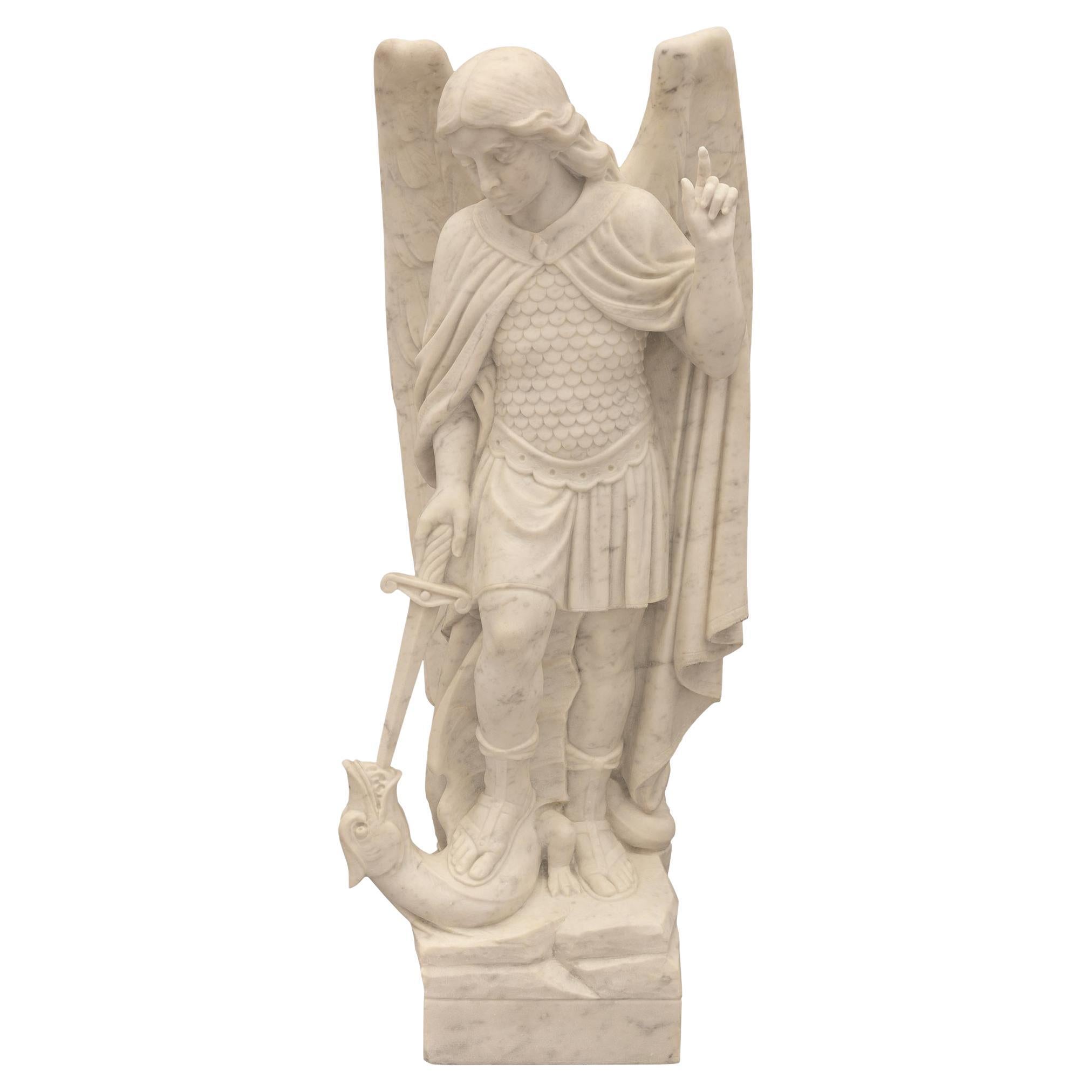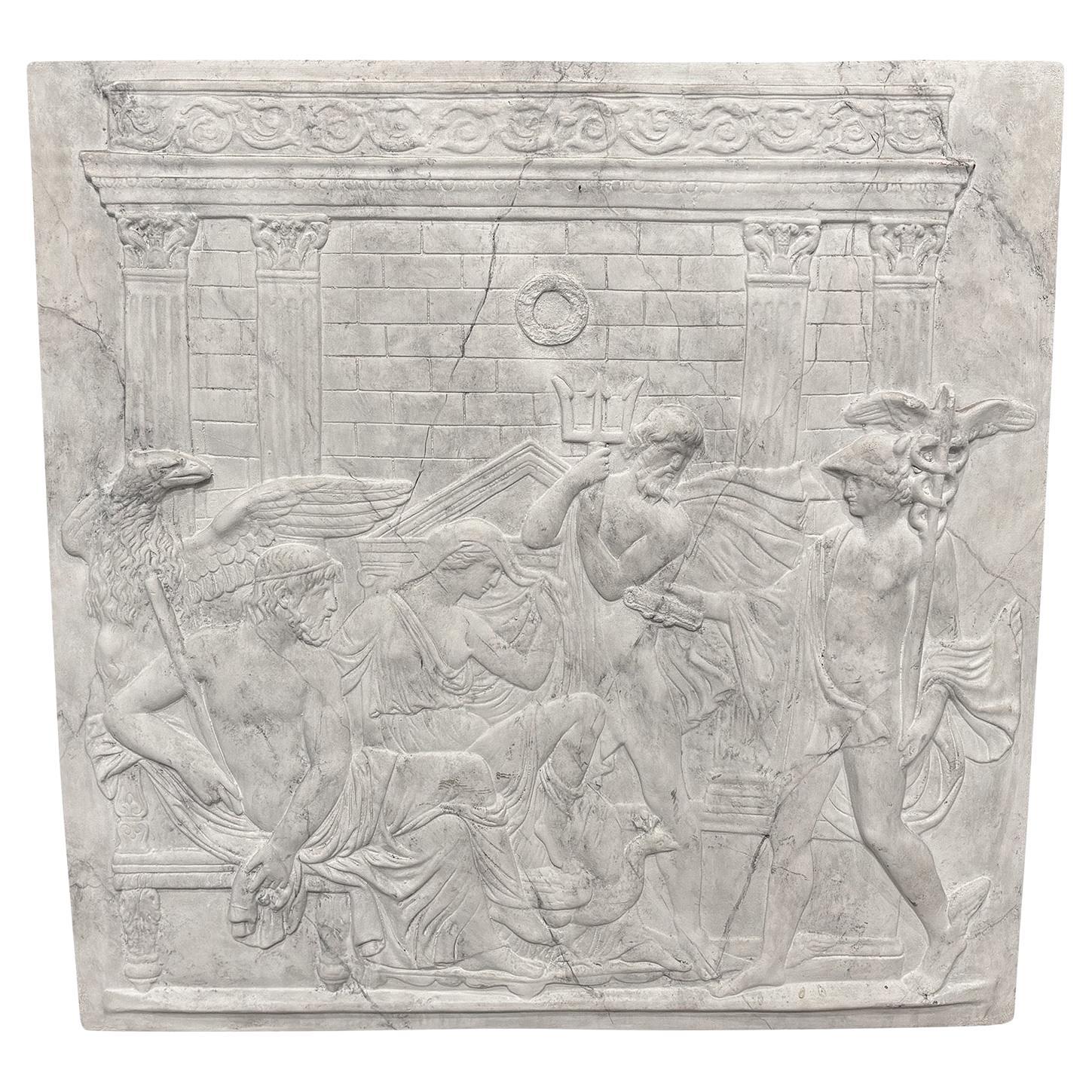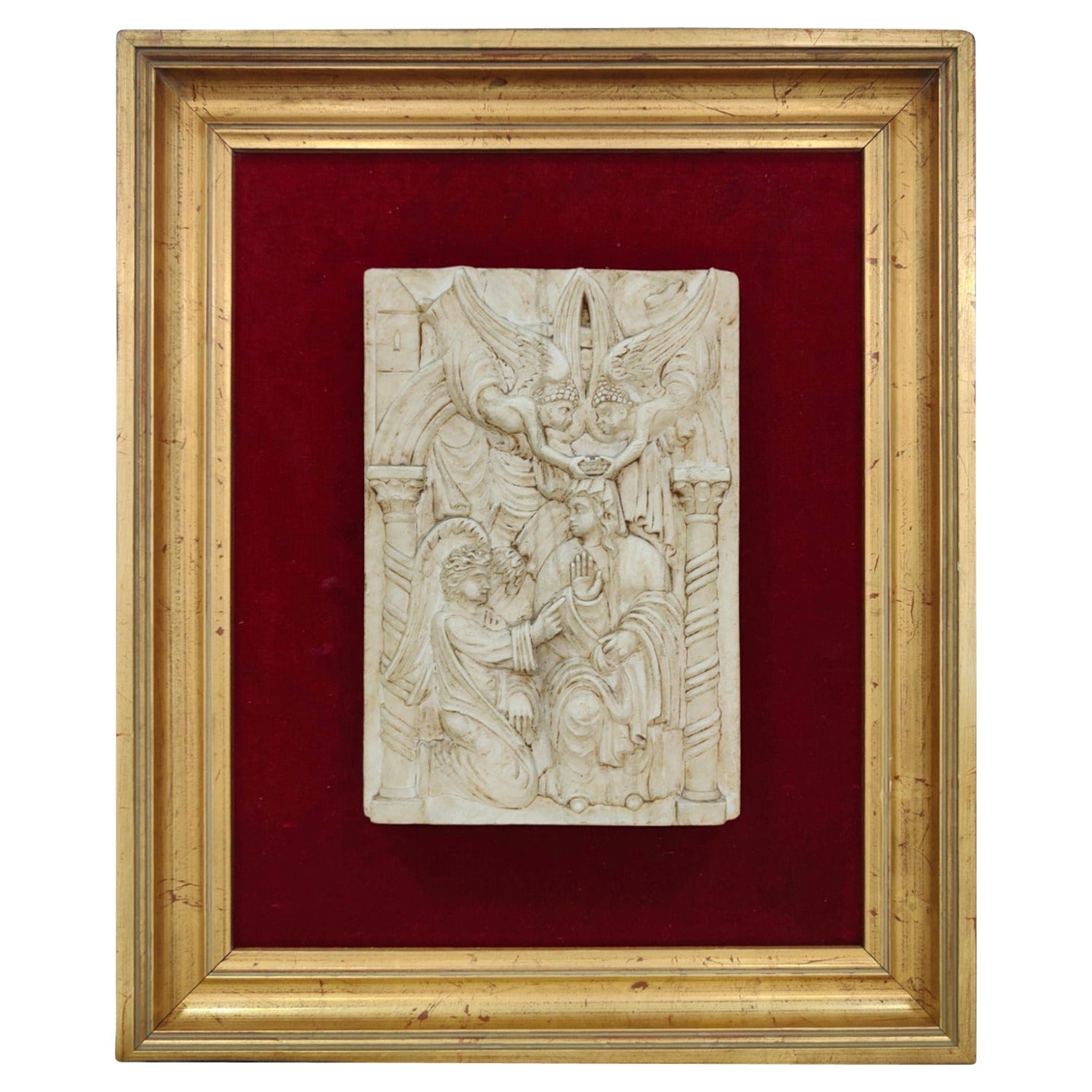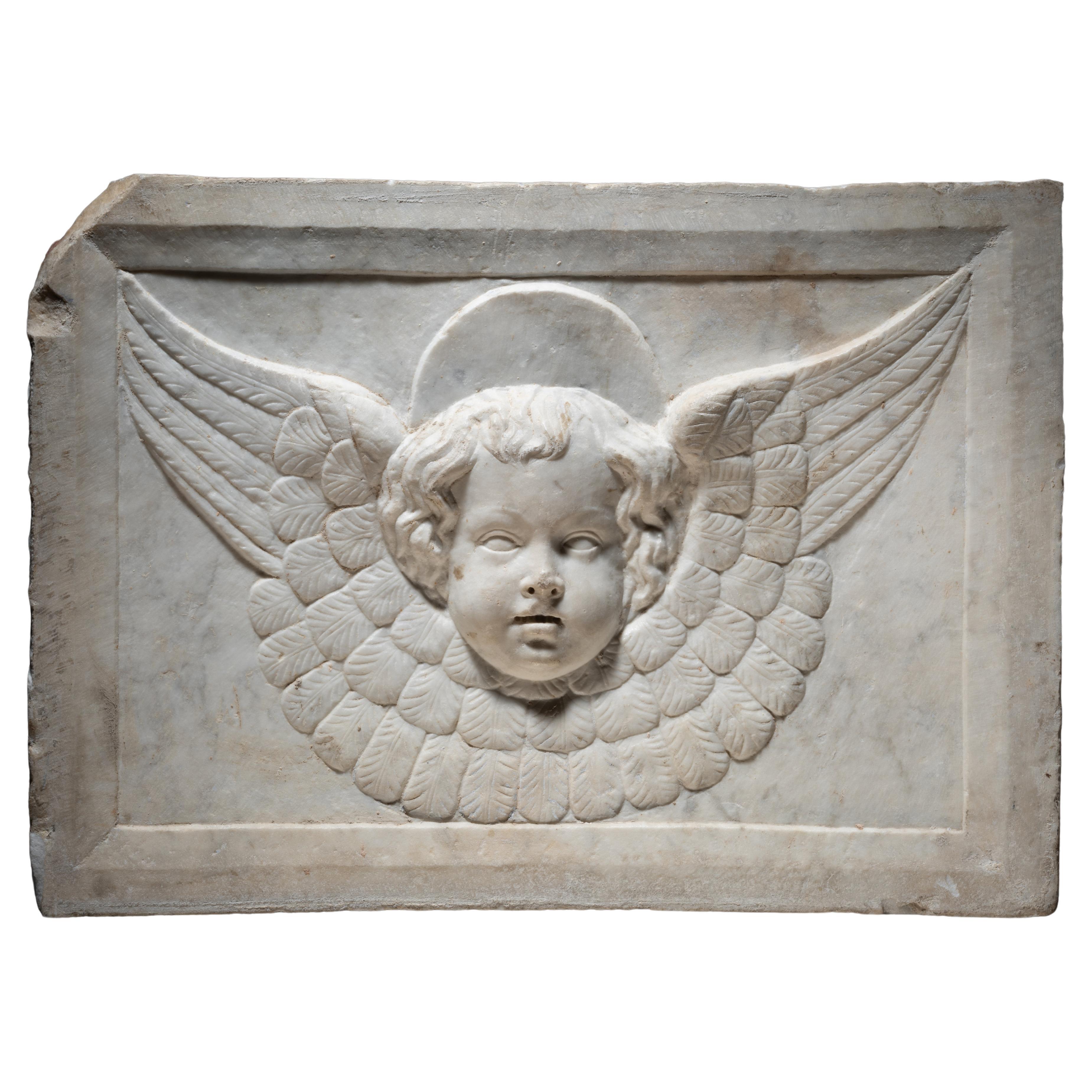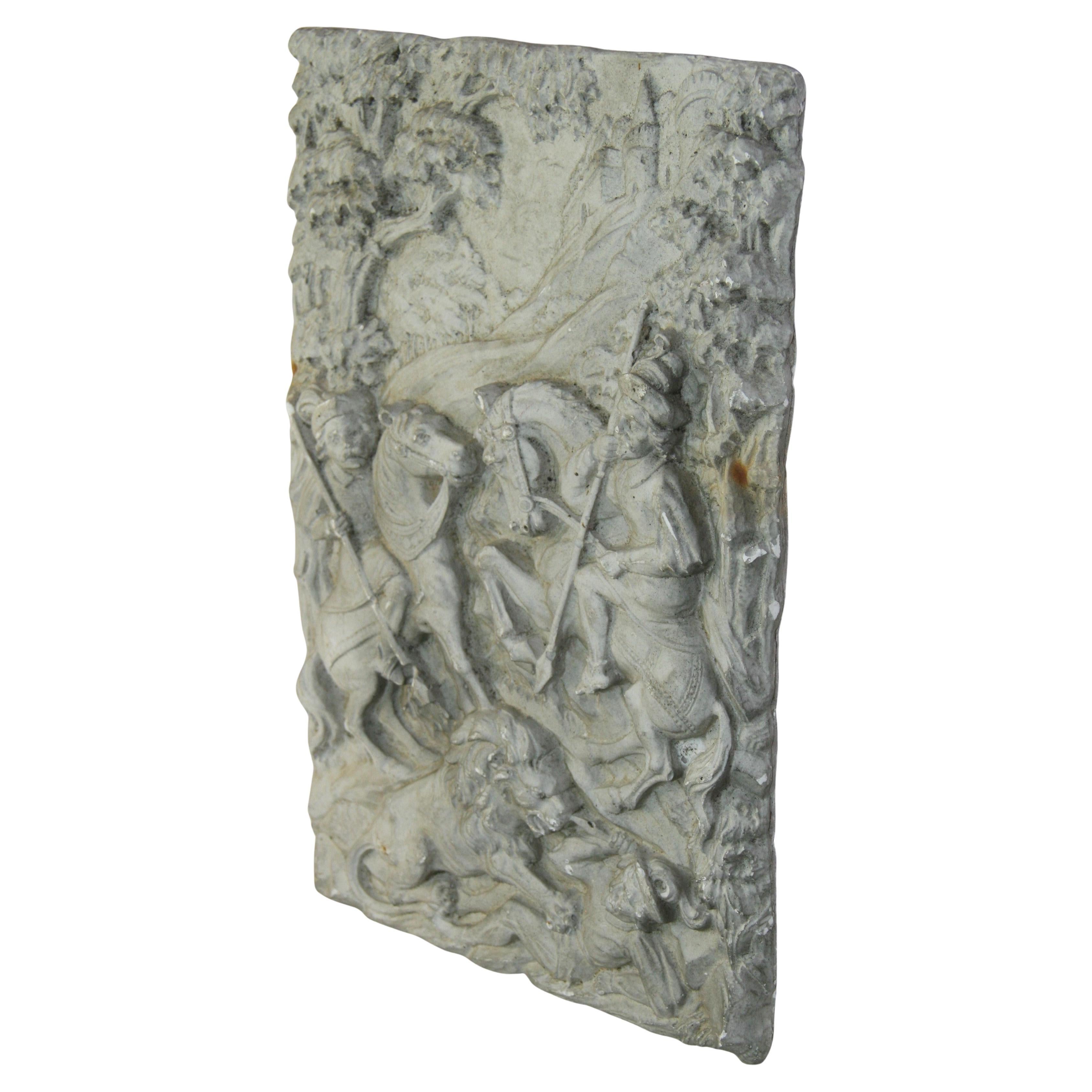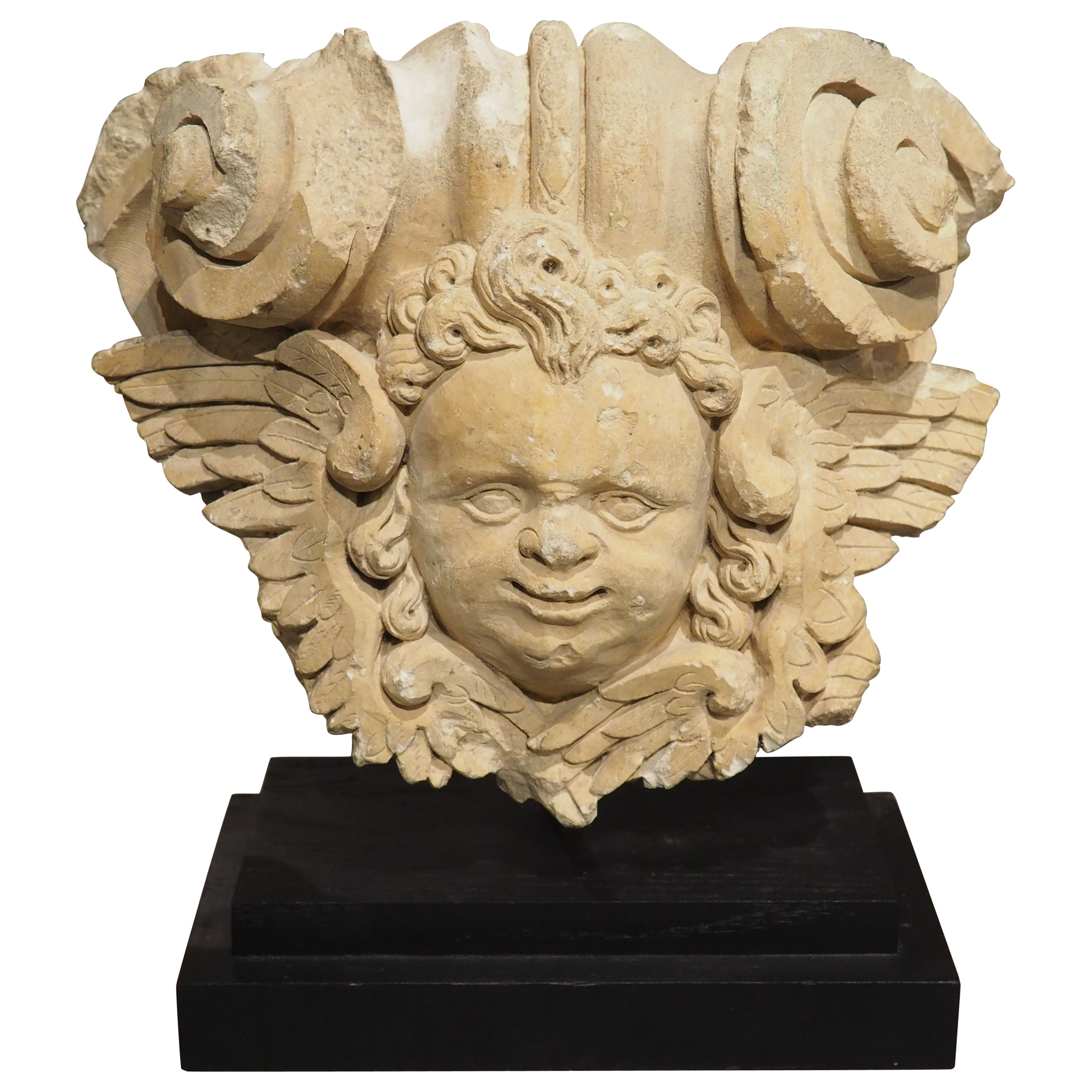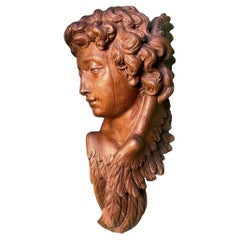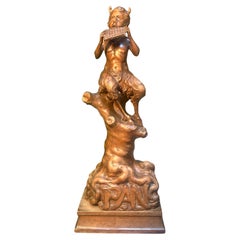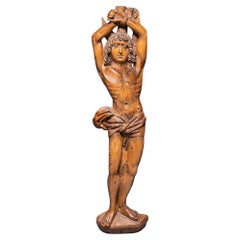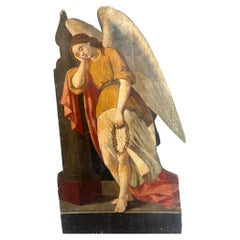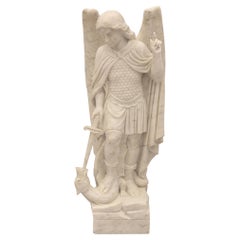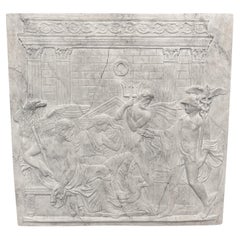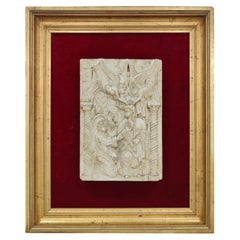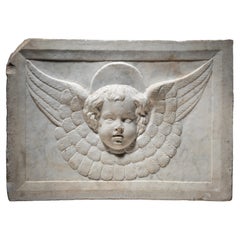Items Similar to 18th-19th Century Italian Marble Relief Sculpture of St Michael Slaying Lucifer
Want more images or videos?
Request additional images or videos from the seller
1 of 16
18th-19th Century Italian Marble Relief Sculpture of St Michael Slaying Lucifer
$3,994.11
£2,895
€3,415.17
CA$5,493.84
A$6,106.75
CHF 3,201.03
MX$74,578.17
NOK 39,962.97
SEK 37,597.70
DKK 25,489.84
About the Item
Antique Marble Sculpture, Antique Marble Relief Plaque, Antique Saint Michael Slaying Lucifer, Antique Marble Relief Sculpture.
Large 18th / 19th Century Italian Verona marble relief of St Michael (Archangel) slaying Lucifer.
Finely sculpted rectangular marble plate. Rosso di Verona marble.
St Michael is depicted as a winged Angel wearing armour, holding a thrusting sword and standing on the demonic Lucifer, also with wings, below.
Large scale and impressive sculptural piece.
H: 83cm x W: 57cm - 6.3cm Deep.
Heavy - Approx 90kg.
In art and sculpture, St Michael is often represented as an angelic warrior, fully armed with helmet, sword, and shield. The shield may bear the Latin inscription Quis ut Deus or the Greek inscription Christos Dikaios Krites or its initials. He may be standing over a serpent, a dragon, or the defeated figure of Satan, whom he sometimes pierces with a lance. The iconography of Michael slaying a serpent goes back to the early fourth century, when Emperor Constantine defeated Licinius at the Battle of Adrianople in AD 324, not far from the Michaelion, a church dedicated to Archangel Michael.
Constantine felt that Licinius was an agent of Satan and associated him with the serpent described in the Book of Revelation (12:9). After the victory, Constantine commissioned a depiction of himself and his sons slaying Licinius represented as a serpent a symbolism borrowed from the Christian teachings on the Archangel to whom he attributed the victory. A similar painting, this time with the Archangel Michael himself slaying a serpent, then became a major art piece at the Michaelion and eventually lead to the standard iconography of the Archangel Michael as a warrior saint.
- Dimensions:Height: 32.68 in (83 cm)Width: 22.45 in (57 cm)Depth: 2.49 in (6.3 cm)
- Style:Renaissance Revival (In the Style Of)
- Materials and Techniques:
- Place of Origin:
- Period:
- Date of Manufacture:1790 - 1830
- Condition:Wear consistent with age and use.
- Seller Location:London, GB
- Reference Number:1stDibs: LU10296243793752
About the Seller
No Reviews Yet
Vetted Professional Seller
Every seller passes strict standards for authenticity and reliability
1stDibs seller since 2025
- ShippingRetrieving quote...Shipping from: London, United Kingdom
- Return Policy
Authenticity Guarantee
In the unlikely event there’s an issue with an item’s authenticity, contact us within 1 year for a full refund. DetailsMoney-Back Guarantee
If your item is not as described, is damaged in transit, or does not arrive, contact us within 7 days for a full refund. Details24-Hour Cancellation
You have a 24-hour grace period in which to reconsider your purchase, with no questions asked.Vetted Professional Sellers
Our world-class sellers must adhere to strict standards for service and quality, maintaining the integrity of our listings.Price-Match Guarantee
If you find that a seller listed the same item for a lower price elsewhere, we’ll match it.Trusted Global Delivery
Our best-in-class carrier network provides specialized shipping options worldwide, including custom delivery.More From This Seller
View All19th Century Life Size Carved Oak Religious Sculpture of a Angel Head with Wings
Located in London, GB
Antique Angel Sculpture, Angel Statue, Religious Antique, Church Antique, Religious Carving, Religious Sculpture.
19th Century Carved Sculpture of an Angel.
19th Century life size ...
Category
Antique Late 19th Century German Gothic Revival Wall-mounted Sculptures
Materials
Wood, Oak
19th Century French Antique Carved Wood Sculpture of the Greek God Pan (Satyr)
Located in London, GB
19th Century French Antique Carved Wood Sculpture of the God Pan or Satyr.
Unusual and characterful late 19th Century carved Walnut figure of Pan on gnarled Burr wood base titled “P...
Category
Antique Late 19th Century French Gothic Revival Figurative Sculptures
Materials
Walnut, Burl
Large 16th Century German Carved Basswood Saint Sebastian Sculpture
Located in London, GB
Antique Saint Sebastian Sculpture, Antique Saint Sebastian Statue, Antique Religious Sculpture, Religious Antique Sculpture, Antique Religious C...
Category
Antique 15th Century and Earlier German Renaissance Figurative Sculptures
Materials
Wood
19th Century Carved Dummy Board Oil Painting of an Angel & Crown of Thorns
Located in London, GB
Antique Angel Painting, Religious Angel Painting, Antique Angel Sculpture, Antique Dummy Board, Antique Religious Painting, Antique Religious Sculpture, Gothic Antique.
19th Century Religious Dummy Board Oil Painting of Angel...
Category
Antique 19th Century German Gothic Figurative Sculptures
Materials
Wood, Paint
16th Century Carved Religious Panel Sculpture of Poor Souls in Purgatory Hell
Located in London, GB
Antique Religious Relief Sculpture, Poor Souls in Purgatory Sculpture, Sinners in Hell Sculpture, Antique Religious Carving, Antique Church Plaque, Antique Religious Panel, Antique P...
Category
Antique 16th Century Italian Renaissance Religious Items
Materials
Wood
Pair of 19th Century Religious Carved Stone Church Plaques of St Luke & St John
Located in London, GB
Architectural Antique Church Stone Plaques of St Luke & St John, Antique Religious Sculptures, Church Antique Plaques, Religious Antique Relief Sculptures...
Category
Antique 1840s English Gothic Revival Architectural Elements
Materials
Stone
You May Also Like
Italian 19th Century Marble Statue of Saint Michael Slaying the Dragon
Located in West Palm Beach, FL
A stunning and very high quality Italian 19th century white Carrara marble statue of Saint Michael slaying the dragon. The statue is raised by a square base with a fine ground like d...
Category
Antique 19th Century Italian Figurative Sculptures
Materials
Marble
19th Century French Neoclassical Plaster Wall Relief of the Roman God Neptune
Located in West Palm Beach, FL
An early 19th Century, antique French wall or bas relief of the Roman God Neptune made of hand crafted Plaster, in good condition. The detailed Parisian wall panel is depicting on th...
Category
Antique Early 19th Century French Wall-mounted Sculptures
Materials
Plaster
19th Century Renaissance Marble Relief
Located in Madrid, ES
19th century Renaissance marble relief.
The relief is carved to the Renaissance taste and is in very good condition. It is framed in a later frame ...
Category
Antique 19th Century Italian Renaissance Figurative Sculptures
Materials
Marble
$1,431 Sale Price
20% Off
Cercle of Jacopo della Pila - Marble relief depicting a winged Cherub
Located in Bruxelles, BE
Cercle of Jacopo della Pila (Lombard, in Naples 1471-1502)
Marble relief depicting a winged Cherub
Naples, second half of15th century
40 x 57 x 12 cm
Exquisitely carved, this relief portrays a winged cherub with cascading hair and delicate features. The cherub's plump, smooth countenance, rounded cheeks, outlined lips, and finely drawn nose emanate a sense of tenderness. The quadrangular module, is adorned with a carved frame. The relief ascends gradually, transitioning from the low relief of the wings to the high relief of the head.
The rectangular frame and the subtly curved form of the artwork suggest that the relief likely adorned the upper part of an arch or a vaulted chapel. The type is that of the perspective room with a coffered ceiling decorated with figures of winged cherubs, which is found in various Neapolitan chapels of the 15th century. Coffered ceilings attest to the recovery of antiquity and the search for luxury in Renaissance architecture, first in Florence, then in Rome and Naples. The majority of the numerous family chapels and tombs built during the late fifteenth century in south of Italy employ the new formal vocabulary of the Florentine Renaissance in a self-confident manner that permitted a broad spectrum of variations.
The escalating admiration for the classical world, coupled with the development of perspective, significantly contributed to the Renaissance endorsement of coffered ceilings. This artistic and constructive device drew inspiration from the intricate marble patterns observed in historical landmarks such as the Arch of Titus, the Temple of Vesta in Tivoli, the Pantheon, and the Basilica of Maxentius. A distilled product of both mathematical and artistic cultures, deeply scrutinizing the ancient world, the coffered ceiling plays a vital role in the perspective construction of space with its regular and directional geometry. The motif of the coffered ceiling decorated with cherubs in relief was introduced in Naples by Francesco Laurana in the plastic decoration of the Arch of Castelnuovo. Laurana's impact on the art scene in the south of Italy was profound. The introduction of the winged cherub into the region's artistic vocabulary bridged the gap between the classical and the contemporary, creating a synthesis that resonated with both aesthetic and spiritual sensibilities. His influence extended beyond the immediate visual appeal, shaping the cultural identity of the Renaissance in southern Italy. Although the plastic decoration of the Arch of Castelnuovo cannot certainly be ascribed to a mature Renaissance style, it was precisely on this occasion that the sculptors who worked there could get to know and export throughout the Italian peninsula that type of "Florentine classicism" which, even in the 15th century Naples, was conditioned by the Burgundian culture imported into the Kingdom by Alfonso of Aragon himself, with artists called from Spain and Northern Europe. The coffered ceiling, with its geometric patterns and Laurana's winged cherubs nestled within, became a symbol of refinement and cultural sophistication. The relief sculptures, carefully integrated into the overall design, transformed the ceiling into a celestial realm, inviting viewers to contemplate the divine while immersed in the grandeur of the Renaissance space.
Similar winged cherubs appears also in the Naples cathedral. Within the renowned Succorpo Chapel, a mesmerizing marble coffered ceiling adorned with cherubs epitomizes the splendor of the Neapolitan Renaissance. The interplay of light and shadow on the textured surface of the marble coffered ceiling introduces an ethereal dimension, providing an immersive visual experience for observers. The geometric precision and the repeated patterns, reminiscent of classical motifs, establish a sense of harmony and balance that has become the hallmark of the Neapolitan interpretation of Florentine Renaissance aesthetics.
Although probably intended to be admired from a distance, this cherub is intricately detailed and exquisitely rendered: the face and hair are elegantly outlined and the feathers are textured through juxtaposed lines. The marble, both figurative and decorative, adheres to the principles of balance and restrained ornamentation typical of the « Florentine Classicism ». Harmonious shapes and gracefully orchestrated curves , rooted in the classical repertoire, converge to evoke a sense of ethereal beauty. The surface displays the masterful use of a chisel to intricately carve the feathers and facial features, creating an almost abstract quality.
This work is a testament to a sculptor of great skill and rich figurative knowledge, seamlessly blending classical firmness in contours with a refined treatment of the marble's surface. The combination of tradition and innovation point to a stylistic idiom from Lombardy, in particular we can find some comparaisons with the works of Jacopo della Pila, sculptor of Lombard origin working in Naples in the second half of the 15th century. He is documented there between 1471 and 1502, and is a protagonist of the Aragon Renaissance in the second half of the Quattrocento, together with the other great Northern sculptor active in the kingdom, Domenico Gagini.
the first commission he received dates back to August 9, 1471, when Jacopo publicly committed to sculpting the funerary monument of Archbishop Nicola Piscicelli to be placed in the Cathedral of Salerno. The last known work is an altar ordered on July 29, 1502, by the noble Jacopo Rocco for the church of San Lorenzo Maggiore in Naples. Between these two chronological extremes (1471-1502), we must place the fervent activity of the artist, who had trained in Rome, perhaps under the guidance of Paolo Romano but also engaged in dialogue with other major artists of the city, especially Isaia da Pisa. He enriched his experience in Naples, initially drawing inspiration from the works of Domenico Gagini and later from the Tuscan masterpieces of Antonio Rossellino and Benedetto da Maiano destined for the church of Santa Maria di Monteoliveto. Jacopo della Pila's artistic personality is thus based on a complex interplay of influences, contributing to the definition of a highly personal style.
Close comparaison can be made between our cherub and the winged angels reliefs...
Category
Antique 15th Century and Earlier Italian Renaissance Figurative Sculptures
Materials
Marble
$22,903 Sale Price
20% Off
Antique French Plaster Wall Sculpture/Relief "The Lion Slayer"
Located in Douglas Manor, NY
1859 Antique French Plaster wall relief depicting slaying of the lion
Category
Vintage 1920s Wall-mounted Sculptures
Materials
Plaster
A 17th Century Mounted French Limestone Carving of a Winged Angel
Located in Dallas, TX
Originally part of a larger architectural from a French building in the 1600s, this hand-carved limestone fragment of a winged angel has been mounted more recently to a painted black...
Category
Antique 17th Century French Baroque Figurative Sculptures
Materials
Stone, Limestone, Metal
